This document is the Indian Standard for hot rolled medium and high tensile structural steel. It specifies nine grades of steel in two tables, with requirements for chemical composition, mechanical properties, and quality levels. It covers the scope, references other standards, definitions, requirements for material supply, grades and sub-qualities, allowed manufacturing processes, and quality requirements for freedom from defects. The standard was revised to update the grades and harmonize with international standards, and provides specifications for structural steel plates, sections, bars and other products.

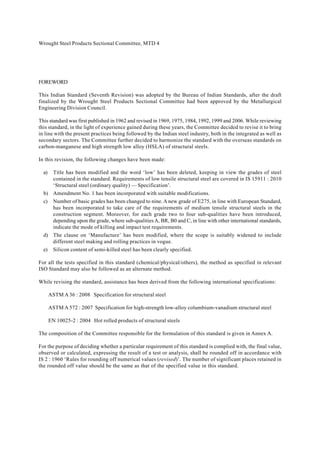


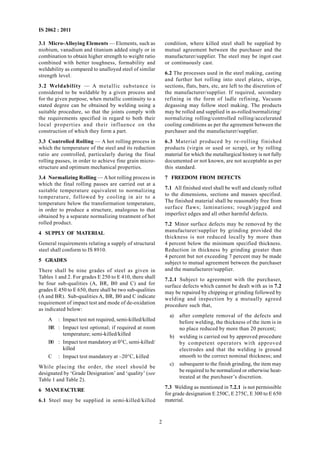

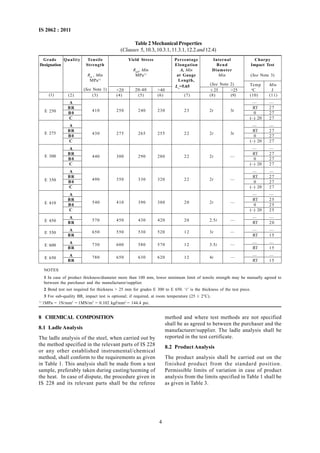
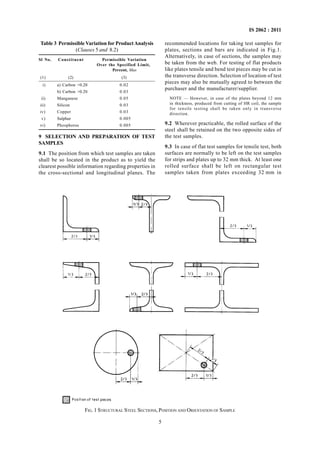

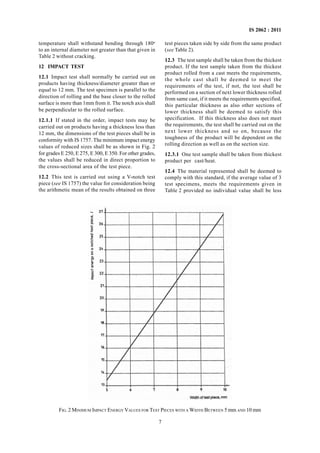


![IS 2062 : 2011
10
TCE Consulting Engineers, Jamshedpur DR M. D. MAHESHWARI
BIS Directorate General SHRI P. GHOSH, Scientist ‘F’ and Head (MTD)
[Representing Director General (Ex-officio)]
Member Secretary
SHRI DEEPAK JAIN
Scientist ‘E’ (MTD), BIS
Long Steel Products and Wires Subcommittee, MTD 4 : 2
Rashtriya Ispat Nigam Ltd (VSP), Vishakhapatnam SHRI P. K. SEN (Convener)
All India Steel Re-Rollers Associations, New Delhi SHRI VINOD VASHISHT
SHRI A. K. BHARGAVA (Alternate)
National Institute of Secondary Steel Technology, Mandi DR R. K. BAGCHI
Gobindgarh
SAIL, Durgapur Steel Plant, Durgapur SHRI A. KANAN
SAIL, IISCO Steel Plant, Burnpur SHRI A. K. SINGH
SAIL, Research & Development Center for Iron & Steel, Ranchi SHRI D. S. GUPTA
DR A. P. SINGH (Alternate)
Steel Wires Manufacturers Association of India, Kolkata SHRI MAHESH PODDAR
SHRI S. K. GHOSH (Alternate)
In personal capacity (248, Akash Darshan Society, Mayur Vihar-1, SHRIAVTAR SINGH
Delhi 110091)
Flat Steel Products Sub-Subcommittee, MTD 4 : 3
TCE Consulting Engineers, Jamshedpur DR M. D. MAHESHWARI (Convener)
Bhushan Power and Steel Ltd, Hooghly SHRI P. S. PAUL
Federation of Engineering Industries of India, New Delhi SHRI H. L. BHARDWAJ
SHRI H. L. BANSAL (Alternate)
Indian Oil Corporation Limited, Noida SHRI M. K. JHA
SHRI T. BANDHOPADHYAY (Alternate)
Ispat Industries Limited, Dolvi REPRESENTATIVE
Metal Containers Manufacturers Association, New Delhi SHRI SANJAY BHATIA
SHRI DIWAKAR SHETTY (Alternate)
SAIL, Bhilai Steel Plant, Bhilai SHRI A. DASGUPTA
SAIL, R&D Centre for Iron & Steel, Ranchi SHRIMATIANJANA DEVA
SAIL, Salem Steel Plant, Salem SHRI S. S. SISODIA
Tata Motors Limited, Pune SHRI V. HARIHARAN
Tata Steel Ltd, Jamshedpur SHRI M. SHOME
The Tin Plate Company of India Ltd, Jamshedpur SHRI A. K. GHOSH
SHRI R. K. SINHA (Alternate)
Thyssenkrupp Electrical Steel India Pvt Ltd, Nasik SHRI J.SREENIVAS
SHRI KAPIL KAPOOR (Alternate)
Welspun Gujrat Sthal Rohren Ltd, Anjar SHRI B.LAKSHMINARASIMHAM
Organization Representative(s)](https://image.slidesharecdn.com/is-20622011-150422004155-conversion-gate02/85/Is-2062-2011-13-320.jpg)
